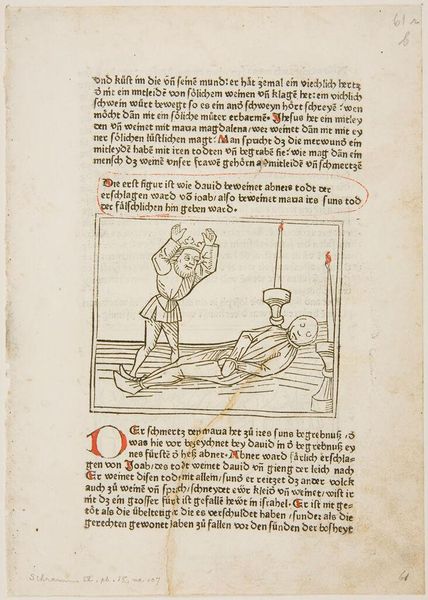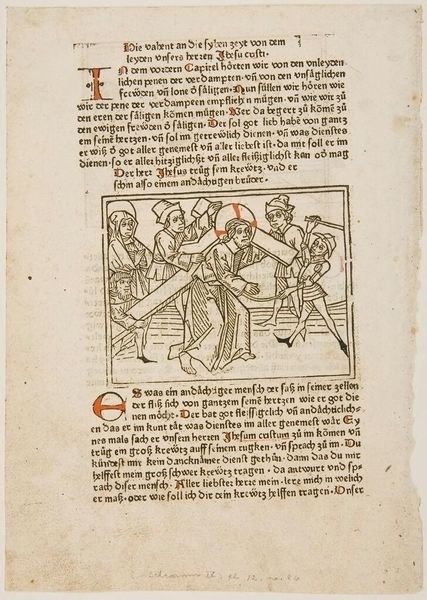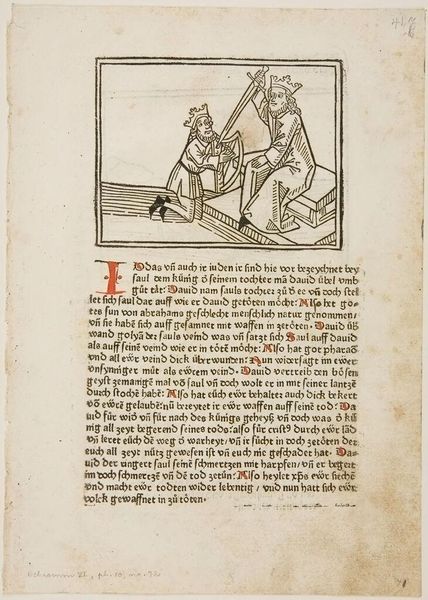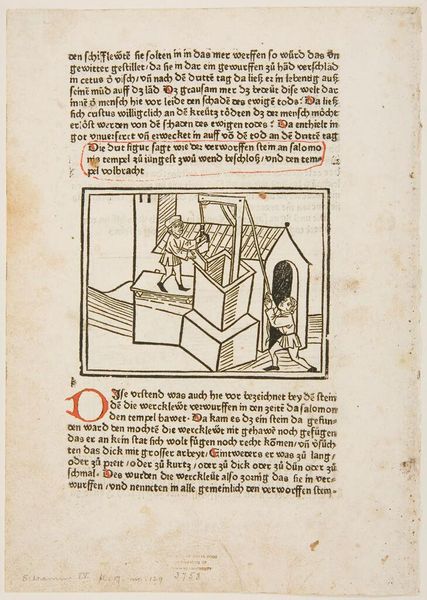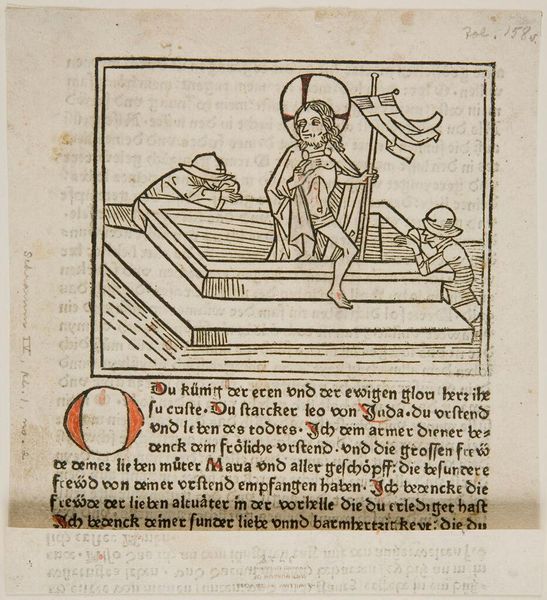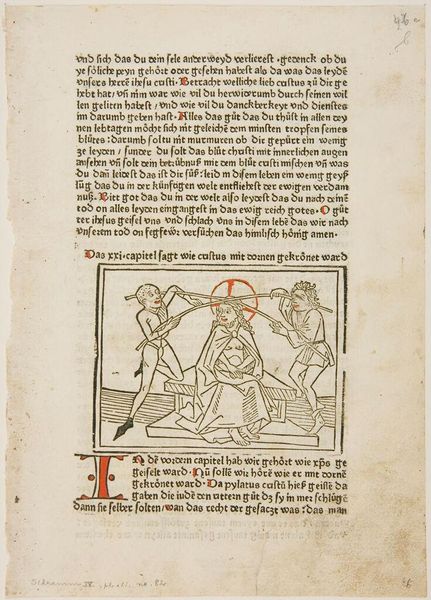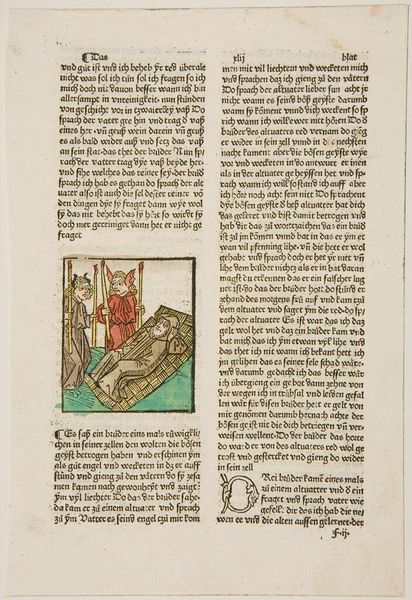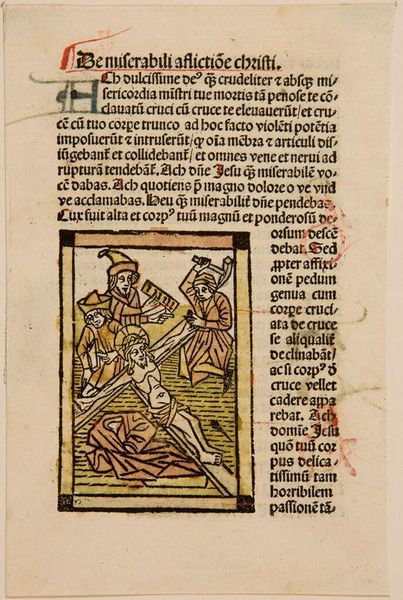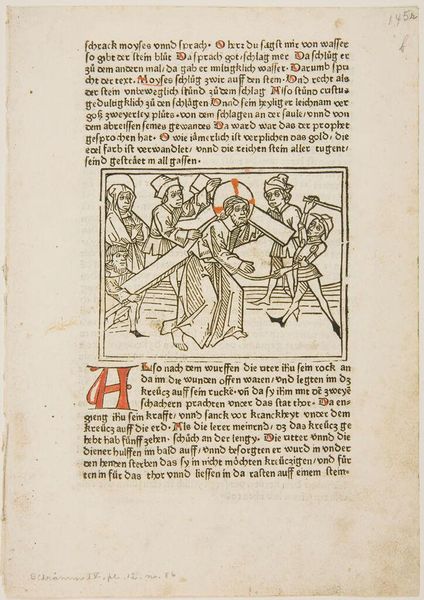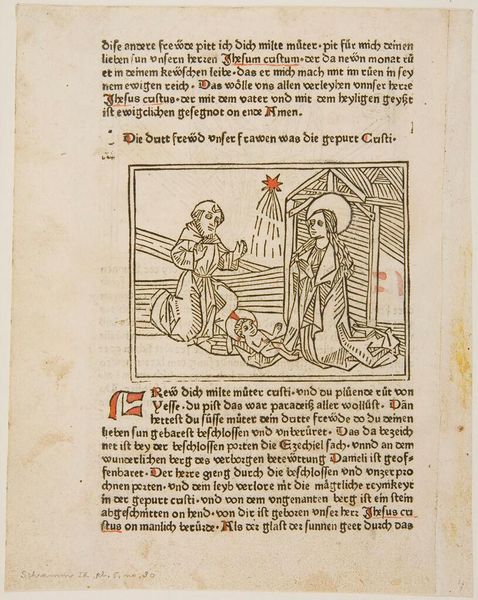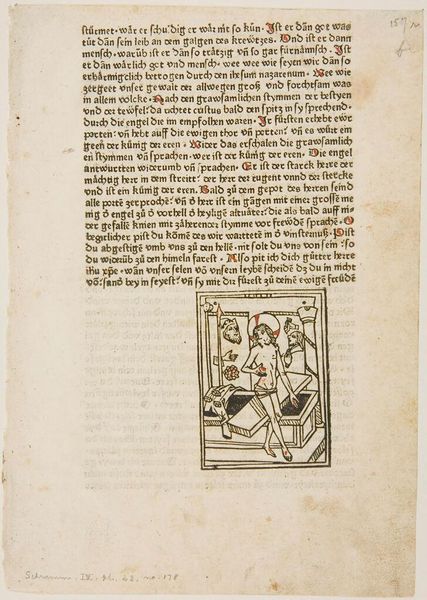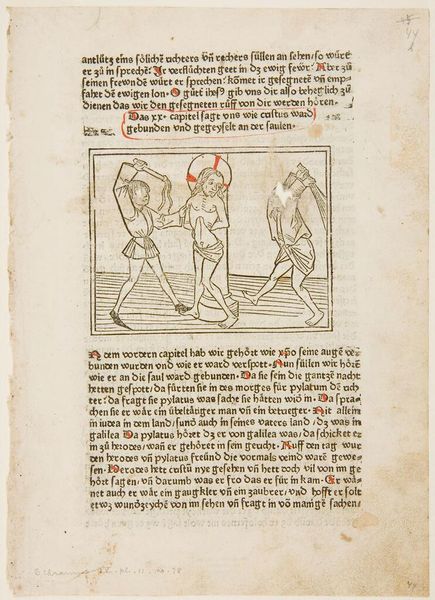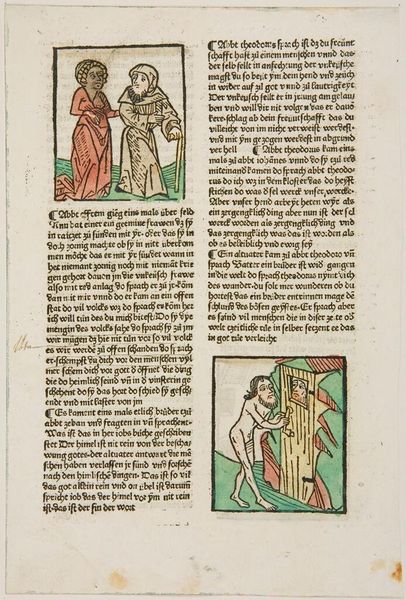
Copyright: CC0 1.0
Curator: This woodcut, "King Euilmeredach cuts his father into 300 pieces," held in the Harvard Art Museums, presents quite a stark image. What are your initial thoughts? Editor: It’s raw. The simple lines amplify the violence—a body being dismembered, almost clinically. The crudeness, the visible labor of its making, is unsettling. Curator: Indeed. The image likely circulated with texts, acting as a visual aid for moral tales. The act of King Euilmeredach can be viewed through the lens of power, gender, and generational conflict, highlighting the instability of patriarchal succession. Editor: I’m struck by the material reality of the woodcut itself. The labor involved, the specific tools needed, and how those choices shape the viewing experience. It’s about more than just the narrative. Curator: Absolutely, the physical object itself tells a story, influencing how we perceive these power dynamics. Editor: This forces us to consider the image not just as representation, but as a product, an artifact of a specific time and place, challenging art’s remove. Curator: Examining the historical context with the materiality provides a powerful lens through which to understand how such images were used to negotiate political, social, and even familial anxieties. Editor: It definitely deepens how we understand the image, pushing us to think about more than representation.
Comments
No comments
Be the first to comment and join the conversation on the ultimate creative platform.
